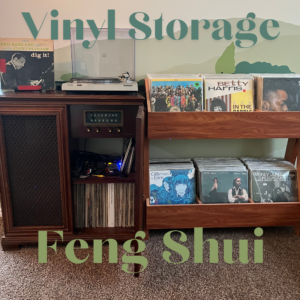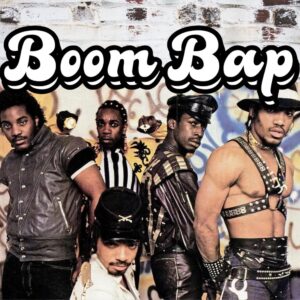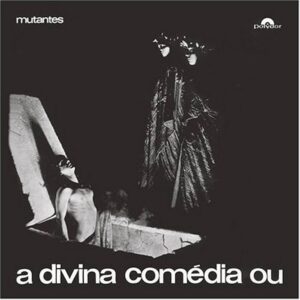Tropicália 101 Feature Series
Table of Contents
0. Part Zero (You are Here): The Art Movement and Cultural Setting Behind Tropicália
1. Part One: Birth of a Unique and Unifying Brazilian Identity
2. Part Two: Tropicália, Religion and the Supernatural
Throughout centuries of European colonial rule, Brazil’s history as a Kingdom, eventually as a Republic, and long after the disappearance of any dominant indigenous culture, numerous Brazilian writers and philosophers have struggled to assert a unified Brazilian cultural identity. The enormity and diversity of Brazil’s geographic regions as well as tumultuous military coups throughout the 20th century didn’t help with the question of national history and identity. The Brazilian Tropicália movement, which surfaced several years after the oppressive military dictatorship took power in 1964, can arguably be considered the birth of Brazil’s first authentic and unique cultural identity, or at least the beginning of a new kind of awareness and much deeper understanding of older unifying narratives that include many Brazilian ways of life. The movement completely changed Brazilian culture in all art forms, on all societal levels and within all political perspectives even though the entire movement itself only lasted for a couple years (roughly ’67 to ’69).
What does the Music of Tropicália sound like?
It depends. What characterizes Tropicália is its musical diversity. If one listens to Caetano Veloso and Gilberto Gil, one may compare much of their music to Bossa Nova or Samba, but to say that Tropicália descended from Bossa Nova or Samba (which many casual commentators online will do) completely misses the point. If one enters Tropicália instead through Os Mutantes, you might believe Tropicália has roots in psychedelic rock. If you’ve listened to the whole spectrum of Tropicália including Rogerio Duprat and other lesser-known artists, you may begin to believe (as I do) that the point is there’s no authoritative Tropicália sound, and that’s probably by design.
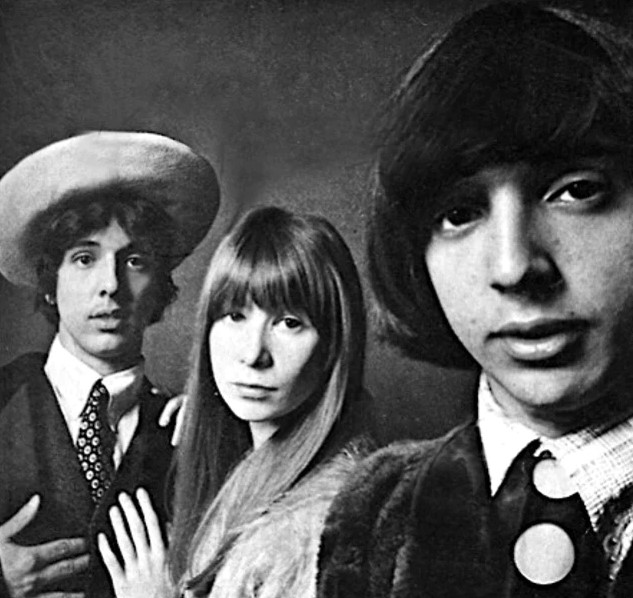
The music of Tropicália was perhaps the first art form that successfully brought all of the major artistic and political perspectives from all over the country under one roof. This was true in virtually all senses, including combining high brow and low brow forms. Brazilian folk music such as samba, forró (a North-Eastern dance music characterized heavily by accordion), afrobeat, and some indigenous styles, got mixed in with psychedelia, blues, funk, jazz and avant-garde elements.
It should be said that I myself am American and, although I’ve lived in Brazil for a few years, I still process music and culture from an American perspective. In addition, if I’ve left out or mischaracterized any cultures or traditions in the writing of this feature, I humbly ask your forgiveness and that you let us know about it through our contact link.
Where does the term “Tropicália” come from and what does it mean?
The movement encompasses all mediums of art and we’ll focus mostly on music, but to better-understand the origin of the word “Tropicália”, it helps to know about Hélio Oiticica’s influence on the movement, and about his art piece Tropicália (1967):

Hélio Oiticica’s Tropicália (1967) was one of a series of interactive art installations called penetrávels, the name denoting an interactive (or penetrative) property. The name Tropicália connoted the 60s visions of a Tropical Paradise, which was Brazil’s “brand message” at the time (think “Girl from Ipanema”) and was meant as an ironic name since the installation was made to look like a home in a favela: sprawling Brazilian slums made of discarded materials that house the country’s impoverished and largest social class.
It’s also important to understand that Oiticica and other artists that participated in the Tropicália scene were coming out of an era of Brazilian art and culture that borrowed heavily (if not entirely) on foreign art and culture movements. One example that any Brazilian citizen or foreign tourist can immediately experience today in most highly-populated Brazilian cities is the influence of Concrete Art mixed with an aesthetic sensibility borrowed from the Dutch tradition of De stijl and German tradition of Bauhaus in government building architecture (the South American version of this mixture is also referred to colloquially as “Tropical Brutalism”). It’s an aesthetic which was heavily influenced by Uruguayan painter Joaquin Torres-Garcia, and thereafter found roots in South American painting and architecture.
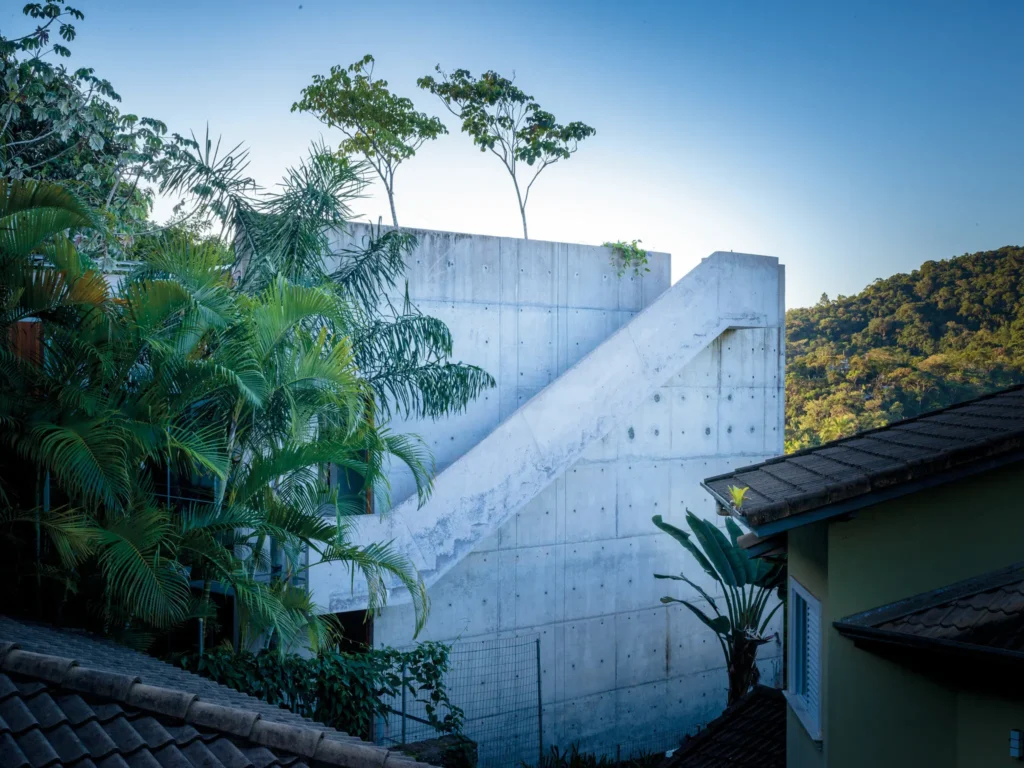
The stark, drab and austere look doesn’t find it’s roots (although finds common ground) in communism as a visitor might assume, but in Modern (1930- 1960) Western European ideals of returning to simple shapes while also creating what the Mid-Century Moderns may characterize as the most ‘honest’ or ‘literal’ representation possible, whether it be in painting, architecture, or music. The over-arching theme of the brutal modern aesthetic of the mid-20th century was: “Function over Form.” Oiticica’s Tropicália installation therefore uses the “let’s call it what it is” notion ironically, pointing at a truly honest depiction of Brazilian life while invoking the country’s political and economic branding as a paradise.
The pattern of thinking that pretended to capture and represent cultural realities continued through to the military coup of 1964 (engineered in part by the United States) that put right-wing dictators in power until 1985. The Tropicália Movement was not just a reaction to the new harsh political regime but also a reaction to an art movement that wanted to prioritize the Mid-Century Modern perspective over all others. The Tropicália Movement instead asserted that a plurality of views could coexist, and the music of Tropicália delivered these diverse views, genres and ways of life in a mixed package that many considered avant-garde.
The Tropicália Movement was arguably Brazil’s first unified movement
Understanding Oiticica’s Tropicália and the following art movement as merely an openly rebellious statement against some big lie (such as “Brazil is not a paradise, it’s hell”) would be grossly inaccurate. Quite to the contrary, Oiticica along with the many artists and musicians that created the movement sincerely and unironically loved Brazil and were unabashedly proud of Brazil’s natural beauty and resources. Understanding the Tropicália movement as simply “Brazil’s version of counter culture” would be a huge mistake. I am an American and I will admit that throughout my life, I have used the American Counter Culture as a measuring stick to understand Brazilian Tropicália, but the two have fewer similarities than one might assume. Part of the American impulse to equate the two comes from Tropicália’s heavy borrowing of Beatles/Hendrix/Stones type psychedelic effects and musical tropes, but the similarities start to thin out dramatically from there. After diving into the music and history further, I came to realize that the use of psychedelic tropes was their way of dealing with modern commercialized colonization.
I’ve found that it’s better to think of Tropicália as a unique Brazilian movement with no analogous equivalent, and arguably the first purely authentic post-colonial unification of a Brazilian identity. Brazil’s giant geographic landscape is more like a continent with numerous ethnicities, than a country. Tropicália is similarly mixed and inclusive of this diversity (although, to be fair, not truly all-inclusive). Caetano Veloso (perhaps most responsible for the start of Tropicália music movement) was quoted often as desiring a spirit of inclusion rather than one of destruction or revolution.
Who were the Musicians that created the Tropicália Movement?

Most historians point to the compilation Tropicália Ou Panis Et Circencis released in 1968 under the Philips label as the marker for when Tropicália began, but many trace its roots to the year before that when Caetano Veloso’s self-entitled record released in 1967 which included the track “Tropicália”. Veloso confirmed later that he named the track after Oiticico’s installation.
Caetano Veloso is also clearly the dominant writer and performer on the compilation album, with a great deal of input from close friend Gilberto Gil, as well as Gal Costa, Os Mutantes (“The Mutants”), Tom Zé, Nara Leão, composer/arranger Rogério Duprat, poet/lyricist Capinam, composer Vicente Celestino and lyricist Torquato Neto. Of all participants of the formation of Tropicália, it’s clear that Gilberto Gil provided a great deal of input throughout the mid-60s to Veloso’s thinking as a close college friend which can’t be overlooked.

Caetano Veloso’s self-titled album was released in 1968 under the Philips label. The cover art shows a Carmen Miranda-esque bombshell female (complete with bananas), who at the time was considered kitsch by Brazilians because her watered-down version of Brazilian culture had met with global commercial success. Miranda is also mentioned in Veloso’s song “Tropicália”.
Caetano Veloso, Gilberto Gil and Gal Costa brought with them the perspective of Brazil’s largest Northeastern state of Bahia to Tropicália. Bahia (meaning “Bay” in Portuguese) was the site of the first Portuguese settlements and the first sugarcane plantations that relied on slave labor. Bahia remains the spiritual origin of Brazilian folk culture that celebrates the still-existing artifacts of an enslaved civilization: feijoada (the bean stew that consists of the discarded pieces of farm animals), capoeira (the martial art that slaves practiced, masking it as a dance to their slave masters) and samba (festival dances put on by slaves) to name a few.

The group Os Mutantes, comprised originally of Rita Lee, Arnaldo Baptista and Sérgio Dias were from São Paulo (South-Eastern part of Brazil), and they brought an urban rock, as well as an eclectic avant garde element to Tropicália, aided largely by composer and artist Rogério Duprat. Tropicália may not have taken some of the directions it had, had it not been for Duprat’s contributions.

Rogério Duprat’s vital contributions to Tropicália are at risk of being forgotten or overlooked by casual listeners. Duprat is responsible for the inventive and “circus” atmosphere to Mutantes’ most influential recordings as well as those of many others. He wrote all of the orchestral arrangements for Tropicália Ou Panis Et Circencis as well as most arrangements for Veloso, Gil, Costa, Os Mutantes and others. His interest in avant-garde art and music can be heard in arrangements that playfully mix cultural styles, samples, diverse instruments and straight-up noise. Duprat can be seen holding a chamber pot on the cover art of Tropicália Ou Panis Et Circencis, perhaps in reference to Duchamp’s Urinal.
Did Tropicália align with any Political Movement or Party?
The short answer is, no. Tropicália was perhaps too avant garde and ahead of its time because it was initially rejected by listeners on both sides of the isle, but the message of Tropicália was far from apolitical. Tropicália’s message didn’t fit neatly into the left-right political paradigm.
As I mentioned above, it’s easy to fall prey to the mistaken comparison of western counter culture and the Brazilian Tropicália movement. Outrageous costumes, long hair and psychedelic music reminds us in the United States of hippies, but in Brazil the Tropicália movement was largely rejected by leftists because of its avant garde lyrics and musical approach. At the same time, the conservative military dictatorship in power censored Tropicália artists and put Gilberto Gil and Caetano Veloso in prison before eventually banishing them from Brazil for a few years. The censorship by the right wing government on Tropicália fostered credibility amongst the left and post-Tropicália met with more commercial success during the 1970s. For several years at the end of the 1960s however, Tropicália artists did their thing with very little public support.
What Was Tropicália’s Message?
One of the clearest expressions that perhaps encapsulates Tropicália’s political message best is Caetano Veloso’s song “É Proibido Proibir” (It’s Forbidden to Forbid). The song may deceive you at first into thinking that it’s an anti-censorship message but it’s much bigger than that:
Login to Spotify in your browser/phone to listen to the whole song, or click ‘Save on Spotify’ to open the song in the Spotify App.
É Proibido Proibir by Caetano Veloso
(Portuguese-English Translation by myself)
The virgin mother says no
And the television ad
And it was written on the gate
And the conductor raised his finger
And beyond the door there’s the doorman, yes
(Chorus)
And I say no
And I say no to no
I say: Yeah! It’s forbidden to forbid, forbidden to forbid
Forbidden to forbid, forbidden to forbid.
Give me a kiss my love
They are waiting for us
Cars burn in flames
Knock down the shelves
The bookshelves, the statues
Glass Pieces, Pots, Books, yes
Another impulse that the listener should avoid is to mistake “É Proibido Proibir” as an anthem to anarchy or nihilism. When Veloso sings about tearing down shelves, books, statues, etc. he is expressing a desire to decenter authority. Who decides which books are worth keeping on the shelf? Who decides who is memorialized into a statue? He’s frustrated with the strict limits of what thoughts and actions are permitted. It’s about inclusion and he wants all ideas to exist on an even and fair playing field.
Therefore, Tropicália was About Decentering, Not Destroying
To “de-center” authority rather than destroy it was a novel idea that neither the country’s Left or Right were ready for. Caetano Veloso’s “Baby” (first released by Gal Costa with Veloso) can safely be called another ‘anthem’ of Tropicália, so much so that at some point it was covered by all members of the Tropicália movement. It captures the movement’s hunger for a plurality of ideas and a comfort with a lack of any guiding ideology, and it’s clearly not a nihilistic take as much as it’s not a simple love song:
Baby by Caetano Veloso
(Portuguese-English Translation by myself)
You
Need to know about the swimming pool
About margarine
About Carolina
About gasoline
You
Need to know about me
Baby, baby (in English)
I know that’s the way it is
Baby, baby
I know that’s the way it is
You
Ought to eat some ice cream
At the café
And walk around with us
And see me up close
And listen
To that song by Roberto (Carlos)
Baby, baby
It’s been so long
Baby, baby
It’s been so long
You
Ought to learn English
You ought to learn what I know
And what I’ve forgotten
And what I’ve forgotten
I don’t know
With me, everything goes well
With you, everything is at peace
We live in the best city
In South America
In South America
You ought
You ought
You ought
I don’t know
Read it on my shirt
Baby, baby
I love you (all in English)
Baby, baby
I love you
The first verse mentions some of the commodities that the new right-wing government is pushing to provide for the people and for their struggling industry: margarine and gasoline as examples. Margarine to us might sound like a failed marketing campaign of the 1980s, but to Brazilians in 1967, it brought into minds a clear picture of the military government’s economic campaign.
Throughout the song there’s an ironic and playful ‘indoctrination’ mood, almost paternally mansplaining what his love interest needs to update herself on, revealing self-awareness to the fact that, in some ways, he’s siding with a paternalistic military government by talking up the pleasures of bourgeois life such as swimming pools. There is not enough ironic distance in this song however to feel like there’s a clear meaning or message in either direction; the message remains purposefully ambiguous. Being comfortable with ambiguity seems to be part of the point.
Many have commented on the startling bourgeois attitude of the narrator and have written it off as simple irony but in my opinion there must be something more going on since the usual devices of irony for the most part are missing. In addition, the various performances of this song by the instigators of the Tropicália movement do not include overtly sarcastic or bitter undertones of irony as they do for other topics.
In Antonio Candido’s discourse at his 1988 conference entitled ‘Radicals’ he talks about the song “Baby” and how it demonstrates a difference between Revolutionaries and Radicals. Candido’s view is that the narrator lists upper-middle-class concerns such as swimming pools and ice cream, not to demonize the middle class, but because to Candido, the middle class perspective is the most radical perspective:
[Candido] defines it [the list of middle-class concerns such as swimming pools, pop music and learning English] as a set of ideas generated in the middle class by enlightened sectors who identify only with part of the specific interests of the working class, this being the real potentially revolutionary part of society. The radical thinks about the problems of the nation as a whole, without paying much attention to class antagonisms. The difference between the revolutionary and the radical is that the former sets out to take effective action, while the latter looks for conciliatory exits [from the conflict] at the time of confrontation.
Fráguas, 2020 “Leia Na Minha Camisa“
Portuguese-English translation by myself, emphasis is mine
The middle class in Candido’s view have enough of a connection with the working class to empathize with them and worry about the same basic necessities of life, but the middle class can not be Revolutionaries because they do not share the same feelings of class antagonism that the lower classes feel (hence the political slogan the narrator invites her to read on his T-shirt). Unsurprisingly it was amongst the emerging middle class in Brazil that Tropicália first took hold.
The ability to hold the world’s economic problems in one’s mind while not being sucked into class warfare is therefore what informs the middle class’s perspective which recognizes some of the establishment, economic growth and stability as benefits of the working class (a take that to the Revolutionary Left sounded similar to what the Right was preaching). Being truly centrist and desiring a conciliatory exit from the conflicts between the opposing forces within Brazil while ultimately desiring the improvement of impoverished lives was radical at the time in Candido’s opinion. We would call this ‘progressivism’ in the United States.
The conciliatory perspective rings true to me as well, especially when you consider that the previous 70 years of Brazilian history before Tropicália was marked by revolutions on both the Left and Right sides with very little progress for ordinary citizens to show for the political conflicts.
Veloso’s generation was also becoming fed up in general with the Left/Right paradigm of Brazil at the time. Modern critic Roberto Schwarz points to movies like “Terra em Transe” (“Entranced Earth”) that demonstrated a larger fatigue amongst the public of the political options of the time.
Tropicália likewise was seeking for artistic, political and economic change by using playfulness as a weapon rather than be antagonistic. It wanted to “win” with inclusion rather than with exclusion. Rather than “This or That” Caetano and other Tropicália artists were looking for a “This and That… and that, and also that” mentality, whether it be art, music, political ideas or economic solutions. The music and art reflected this, not in a passive way, but aggressively.
Tropicália is not just pastiche: it was Antropofagia (aka cultural “cannibalism”)
This is where we return to the overarching desire within Brazilian (and many other countries born from colonialism) culture to assert a national identity that is purely and authentically Brazilian. This philosophy of radical inclusion coupled with the desire to connect the working class with the middle class and assert a unique identity that is purely Brazilian created playful derision with colonial imports that to Caetano Veloso resembled what Oswald de Andrade (in his 1928 Manifesto Antropófago) called Antropofagia. Antropofagia (or “cultural cannibalism”) was characterized as “consuming” other cultures, especially those from colonizing sources, and processing those tropes into a new authentically unique Brazilian form.
In other words, the Modern battle of one culture’s music and ideas over another was over. Colonialism won centuries ago, and Tropicália’s impulse was, for example, not to continue to play samba and pretend it was a purely authentic Brazilian form. Tropicália instead “consumed” the music of its colonizers and reprocessed it into a form completely unique to Brazil.
You have just read our Intro (Part Zero) to Tropicália.
Onward to Part 1 of our Tropicália Feature Series
Click Here >>


